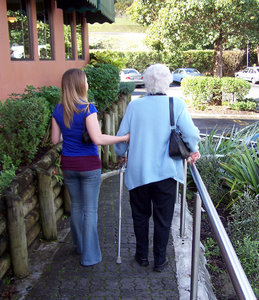“The baby boom generation grew up and reared their own children in communities that, for the first time in human history, were built on the assumption that everyone would be able to drive an automobile,” said John Robert Smith, president and CEO of Reconnecting America and co-chair of Transportation for America. “What happens when people in this largest generation ever, with the longest predicted lifespan ever, outlive their ability to drive for everything? That’s one of the questions we set out to answer in this report.”

The report he’s talking about is the Aging in Place, Stuck without Options report that ranks large, metro areas by the percentage of seniors that have poor access to public transportation, now and in the coming years; it offers other data on aging and transportation issues. Many of these issues involve the increased risks of elderly pedestrian accidents in Massachusetts and elsewhere.
Our Boston personal injury attorneys understand that the population of Americans that are 65 and older and live in communities where public transportation service is poor or non-existent is expected to reach 15.5 million by 2015. We will be even closer to that predicted number as the baby boom generation grows rapidly and “ages in place” in suburbs and exurbs with few transportation options for those who don’t drive.
This study aims to figure out how cash-strapped states and local governments will come up with the funds to help accommodate these residents. Researchers believe that these governments will be turning to federal support to help them meet their needs.
In this report, Boston is ranked as the 8th largest metro area, with a population of 3 million or more, with an expected population of residents age 65 to 70 that will have poor access to transit features in 2015. Researchers predict that 231,944, or 45 percent, of people in this age group will be hindered by the lack of access.
Metro areas are encouraged to look into expanding public transit systems to be able to address the mobility needs of these older residents. Communities are also urged to get proactive and to support the creation of community-based programs, like volunteer programs, flex-routes, service routes and deviated fixed-routes that can be tailored to the needs of the residents. These programs should include senior-friendly shuttles to shopping centers, medical facilities and local services. They should also consider flexible route services that can provide transportation for those who have short notice or spontaneous travel requirements. These transit options should also be able to accommodate residents who require wheelchairs or shopping carts.
“The vast majority of people age 50-plus want to stay in their homes for as long as possible, according to our research,” said AARP Executive Vice President Nancy LeaMond. “When they do move, they most often want to stay in their communities.”
By offering more public transit options that these elderly residents can effectively use, we can help to reduce their risks of potentially fatal pedestrian accidents in the Greater Boston area.
If you or a loved one have been experienced a pedestrian accident in the Boston area, contact Massachusetts Personal Injury Attorney Jeffrey S. Glassman for a free and confidential appointment to discuss your rights. Call (617) 777-7777.
More Blog Entries:
68-Year-Old Hit by Two Cars and Killed in Framingham Pedestrian Accident, Boston Personal Injury Attorney Blog, July 20, 2011
New Report Ranks Fatal Massachusetts Pedestrian Accidents, Boston Personal Injury Attorney Blog, May 26, 2011
 Boston Personal Injury Attorney Blog
Boston Personal Injury Attorney Blog

